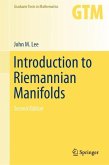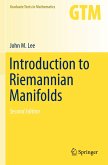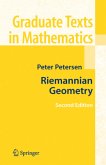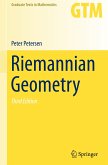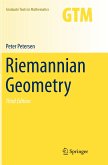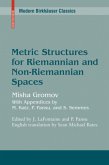This text is designed for a one-quarter or one-semester graduate course on Riemannian geometry. It focuses on developing an intimate acquaintance with the geometric meaning of curvature and thereby introduces and demonstrates all the main technical tools needed for a more advanced course on Riemannian manifolds. The book begins with a careful treatment of the machinery of metrics, connections, and geodesics, and then introduces the Riemann curvature tensor, before moving on to submanifold theory, in order to give the curvature tensor a concrete quantitative interpretation. The remainder of the text is devoted to proving the four most fundamental theorems relating curvature and topology: the Gauss-Bonnet Theorem, the Cartan-Hadamard Theorem, Bonnet's Theorem, and a special case of the Cartan-Ambrose- Hicks theorem. This unique volume will especially appeal to students by presenting a selective introduction to the main ideas of the subject in an easily accessible way. The material is ideal for a single course, but broad enough to provide students with a firm foundation from which to pursue research or develop applications in Riemannian geometry and other fields that use its tools. Of special interest are the "exercises" and "problems" dispersed throughout the text. The exercises are carefully chosen and timed so as to give the reader opportunities to review material that has just been introduced, to practice working with the definitions, and to develop skills that are used later in the book. The problems that conclude the chapters are generally more difficult. They not only introduce new material not covered in the body of the text, but they also provide the student with indispensable practice in using the
This book is designed as a textbook for a one-quarter or one-semester graduate course on Riemannian geometry, for students who are familiar with topological and differentiable manifolds. It focuses on developing an intimate acquaintance with the geometric meaning of curvature. In so doing, it introduces and demonstrates the uses of all the main technical tools needed for a careful study of Riemannian manifolds. The author has selected a set of topics that can reasonably be covered in ten to fifteen weeks, instead of making any attempt to provide an encyclopedic treatment of the subject. The book begins with a careful treatment of the machinery of metrics, connections, and geodesics,without which one cannot claim to be doing Riemannian geometry. It then introduces the Riemann curvature tensor, and quickly moves on to submanifold theory in order to give the curvature tensor a concrete quantitative interpretation. From then on, all efforts are bent toward proving the four most fundamental theorems relating curvature and topology: the Gauss-Bonnet theorem (expressing the total curvature of a surface in term so fits topological type), the Cartan-Hadamard theorem (restricting the topology of manifolds of nonpositive curvature), Bonnet's theorem (giving analogous restrictions on manifolds of strictly positive curvature), and a special case of the Cartan-Ambrose-Hicks theorem (characterizing manifolds of constant curvature). Many other results and techniques might reasonably claim a place in an introductory Riemannian geometry course, but could not be included due to time constraints.
This book is designed as a textbook for a one-quarter or one-semester graduate course on Riemannian geometry, for students who are familiar with topological and differentiable manifolds. It focuses on developing an intimate acquaintance with the geometric meaning of curvature. In so doing, it introduces and demonstrates the uses of all the main technical tools needed for a careful study of Riemannian manifolds. The author has selected a set of topics that can reasonably be covered in ten to fifteen weeks, instead of making any attempt to provide an encyclopedic treatment of the subject. The book begins with a careful treatment of the machinery of metrics, connections, and geodesics,without which one cannot claim to be doing Riemannian geometry. It then introduces the Riemann curvature tensor, and quickly moves on to submanifold theory in order to give the curvature tensor a concrete quantitative interpretation. From then on, all efforts are bent toward proving the four most fundamental theorems relating curvature and topology: the Gauss-Bonnet theorem (expressing the total curvature of a surface in term so fits topological type), the Cartan-Hadamard theorem (restricting the topology of manifolds of nonpositive curvature), Bonnet's theorem (giving analogous restrictions on manifolds of strictly positive curvature), and a special case of the Cartan-Ambrose-Hicks theorem (characterizing manifolds of constant curvature). Many other results and techniques might reasonably claim a place in an introductory Riemannian geometry course, but could not be included due to time constraints.



